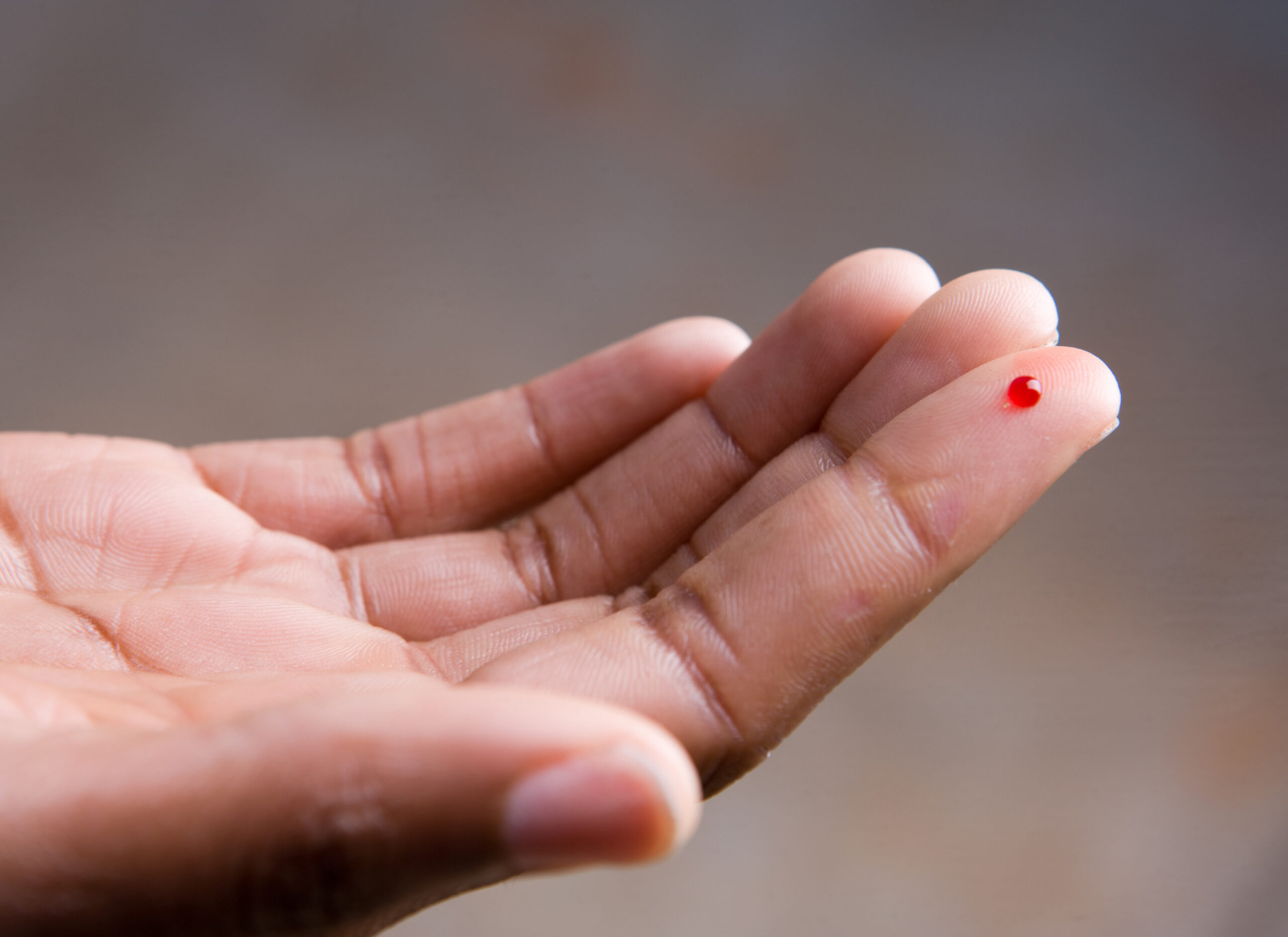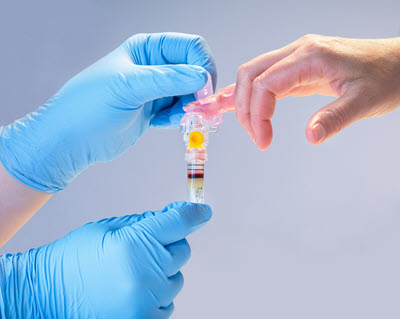FDA Watch: New BD Collection System Uses Just Tiny Amounts of Blood
Whether the MiniDraw™ device dredges up memories of Theranos’ failed tech remains to be seen.

Although the Theranos fiasco has mostly been relegated to laboratory business history books, a new 510(k) clearance from the U.S. Food and Drug Administration (FDA) for a Becton, Dickinson and Company (BD) blood collection device might ignite a sense of déjà vu.
BD’s MiniDraw™ Capillary Blood Collection System sounds similar to the nanotainer device Theranos used to draw blood without needles. Blood is drawn from the capillaries in a patient’s finger and placed into a tiny collection device for testing. The FDA has approved the device for low-volume blood collection for lipid panels, selected chemistry tests, and hemoglobin and hematocrit (H&H) testing.1
According to Russell Heinrich, a BD vice president of specimen management research and development, the MiniDraw only requires 225 microliters of blood for an H&H test and 435 microliters for other tests. That’s less than one-twentieth and one-tenth of a teaspoon’s worth of blood, respectively. The H&H draws have been validated on the on Sysmex XN-Series™ instruments, while the larger test draws have been validated on many of the most commonly used chemistry analyzers, according to Heinrich.

Image credit: BD (Becton, Dickinson and Company)
Aside from using the MiniDraw for lipid and H&H testing, it is also approved for assays such as alkaline phosphatase, alanine aminotransferase, sodium, chloride, albumin, blood urea nitrogen, calcium, creatinine, and total bilirubin.
BD also intends to expand approvals for other tests in the future, with a focus “beyond just primary care-oriented tests,” Heinrich said. However, he added the specific tests BD wants to expand into are proprietary right now and declined to discuss them further.
The MiniDraw’s simplicity of use means that it can be used to draw blood by medical professionals other than phlebotomists, including pharmacists and pharmacy technicians. They can use the device after reviewing the information for use documentation and a training video, Heinrich said.
BD has partnered with Babson Diagnostics to enable blood collections in non-clinical locations, such as pharmacies, grocery stores, and other retail businesses. “We are piloting use of the device and diagnostic system in pharmacies first, and have received positive feedback from pharmacy staff,” Heinrich said in an email. The initiative, known as BetterWay, is launching this year.2
Whether or not the medical community and general public will accept a product that might conjure up Theranos remains to be seen.
“I would say that the market is going to be very suspicious of any diagnostic claim using just a prick of the finger or a small outlet—unless you bring a lot of data. And that data is going to have to be third-party verified,” said Phillip Gibbs, PhD, chief science officer for Clinical Lab Consulting in Atlanta, GA. Gibbs noted that the fact BD has specific minimum blood draws for the device suggests it has done its due diligence in that area.
And there is more than a nominal connection between Theranos and BD: Both sides wrestled in trademark litigation nearly a decade ago over dueling blood collection devices and names.3
Heinrich did not directly respond to a question about whether MiniDraw might draw some negative inferences because of the nanotainer, but brushed off any concerns nonetheless.
“It’s really an apples to oranges comparison,” he said. “The MiniDraw™ is FDA-cleared and comes from a company with 75 years of experience researching, developing, and innovating in the specimen management space.”
Theranos, by comparison, was in existence for little more than a decade before imploding after being exposed as a fraud.
Takeaway
The desire to push diagnostic specimen collections outside of strictly clinical settings is driving developments such as BD’s MiniDraw™ system, but they may have to overcome perceptions about past product failures or even fiascoes.
References:
*******
Here are other significant new laboratory testing and diagnostic product clearances announced in the period from late November 2023 to mid-January 2024:
New FDA Approvals and Emergency Use Authorizations (EUAs)
| Manufacturer | Product |
| Becton Dickinson | 510(k) clearance for BD Vacutainer® Fluoride Blood Collection Tubes |
| QuidelOrtho | 510(k) clearance for Savanna PCR platform and Savanna HSV 1+2/VZV in vitro diagnostic test for the detection and differentiation of Herpes simplex virus type 1, Herpes simplex virus type 2, and Varicella-zoster virus. |
| Inflammatix | Breakthrough Device Designation for the TriVerity ™ test for rapid diagnosis of sepsis and acute infections. It incorporates a panel of 29 messenger RNAs to analyze the body’s immune response. It also provides three readouts to facilitate diagnosis and prognosis of adult patients with suspected acute infection or sepsis who present in hospital emergency departments. |
| Biomerica | 510(k) clearance for its Hp Detect™ Stool Antigen ELISA test, which is intended to detect the presence of the H. pylori bacteria in the stool. |
| BioPorto | 510(k) clearance for its ProNephro AKI™ test for testing acute kidney injury in pediatric patients (age 3 months to 21 years). |
| Acrivon Therapeutics | 510(k) clearance for its ACR-368 OncoSignature assay. It uses immunofluorescence for the identification of ovarian cancer patients who may benefit from treatment with ACR-368 (Prexasertib). |
| AutoGenomics | Approval for the AvertD™ buccal sample collection kit, which is used to detect and identify 15 genetic polymorphisms in genomic DNA that can be used to assess a patient’s risk for developing opioid use disorder. |
| Pangea Labs | Breakthrough Device Designation for Pangea’s Bladder CARE™ Assay, which measures the methylation levels of three urothelial cancer-specific DNA biomarkers in a single qPCR reaction. It has sensitivities and specificities of 93.5% and 92.6% for the detection of bladder cancer, 96.0% and 88.0% for upper tract urothelial carcinoma, and 89% sensitivity for carcinoma in situ. |
New CE marks and global certifications
There were no notable European CE certifications or global approvals announced during the period.
Subscribe to view Essential
Start a Free Trial for immediate access to this article